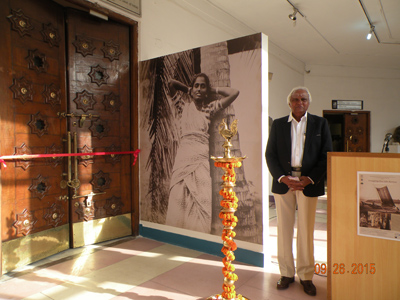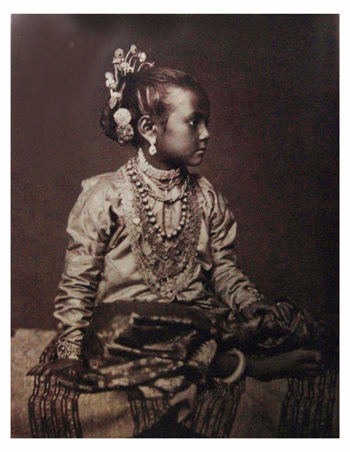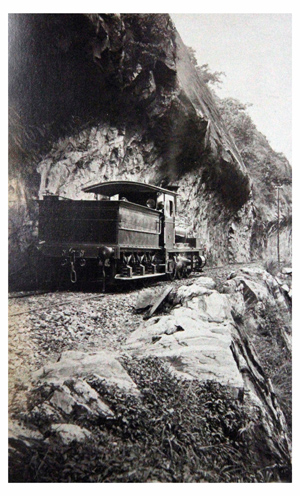Island in transition
When well-known architect and art historian Ismeth Raheem received a call from New Delhi in May, it was for a project right after his own heart.

Ismeth Raheem pictured at the exhibition opening in New Delhi
He was asked to provide background data for a rare exhibition of 19th Century and early 20th Century images of Ceylon.
Author of the book ‘Images of British Ceylon – History of 19th Century Photography in Sri Lanka’ published in 2000, Raheem who is on the Board of Trustees of the National Trust of Sri Lanka, was delighted.
‘Imaging the Isle Across- Vintage Photography from Ceylon’ – opened at New Delhi’s National Museum on September 26 and has already evoked considerable interest among the Indian press and public for its collection of over a hundred rare images, that speak vividly of an island in transition.
Drawn largely from the Alkazi Collection of Photography, the photographs showcase the people of 19th Century Ceylon, its stunning landscapes – lush valleys and even harshly denuded land(being cleared for estates and railtracks), its traditional and new industries, sacred cultural sites and emerging cities.
While the majority of the work is by colonial photographers, the exhibition also has a selection of experimental works of that famous Lankan – Lionel Wendt, from the collection of Dominic Sansoni.
Raheem had another connection to the exhibition – Ebrahim Alkazi, now 90 years of age who founded the Alkazi Foundation for the Arts which is dedicated to the preservation of the cultural history of India whom he recalls meeting years ago.
Interestingly this exhibition is curated by Alkazi’s grandson Rahaab Allana.

Charles T. Scowen – ‘Malay Girl’- Albumen print- 1875-1880
Providing the main article ‘Early Photographers from Ceylon- 1840-1920’ for the exhibition’s handsome catalogue, Raheem details how Ceylon witnessed some of the most pioneering photography in South Asia and how such famous practitioners such as Jules Alphonse Eugene Itier, Eliphalet Brown Jr, Frederick Fiebig, John Thomson, Robert Schangleweit, Samuel Bourne,William Henry Jackson, renowned war photographer Felice Beato, and even Henri Cartier Bresson found ample scope here.
He writes too on the pioneering women photographers who found the island fertile ground for their creativity – Julia Margaret Cameron, Inez Maria Gibello (a.k.a. Madame del Tufo) and Ethel Mairet Coomaraswamy – some of their little-seen works figure in the exhibition.
Many of the images are from the photographic companies such as Scowen and Co., Plate and Co. and Skeen and Co. who focused on ‘oriental landscapes’(the latter specialising in photographing ‘native types’).
Other contributors to the catalogue explore the colonial gaze. “The illustration of ethnography in photography on the island- just as in the rest of the Indian subcontinent – took on the typical font wherein colonised people were essentialised into fixed categories, identities and roles.
The staging or glimpsing of an island through ‘snapshot views’ or postcards- from a Tamil woman posing in a studio, an aligned group of Veddahs to a toddy drawer climbing a coconut palm- can be perceived as the homogenisation of an island and its peoples,” Ayesha Matthan writes in her essay – ‘Lens upon Islanders’.
Presented by the Alkazi Foundation for the Arts, the Indian Ministry of Culture, the National Museum, New Delhi, the Archaeological Survey of India, and supported by the University of Cambridge’s Centre of South Asian Studies and the Indo-Sri Lanka Society, the exhibition continues until November 10 in Delhi.

Skeen and Co.- Railway engine near a dramatic section of the Colombo-Kandy railtrack. Albumen print, 1870s
Raheem is hopeful that before long it can be taken to London and Singapore and more importantly, brought to Sri Lanka to give Lankans a rare glimpse of a bygone era in this country’s history.


